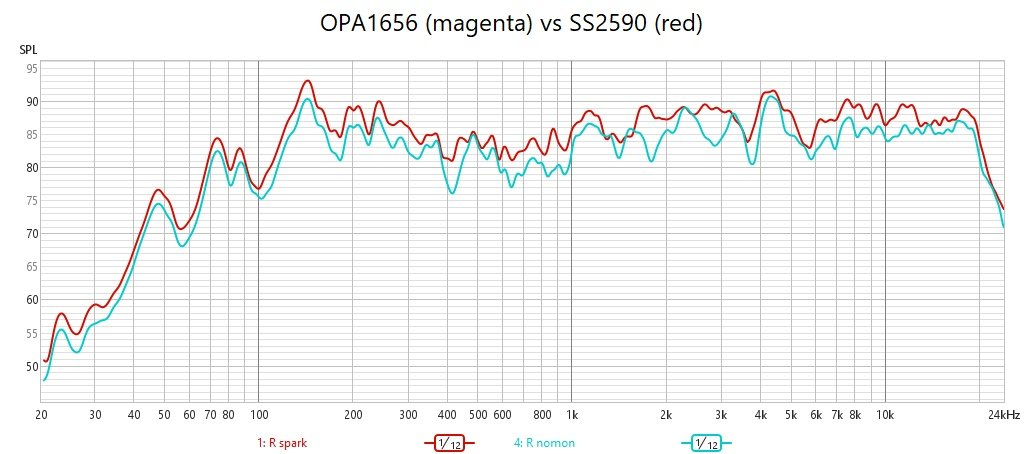qusp
Member of the Trade: Twisted Cables
- Joined
- Jun 18, 2008
- Posts
- 7,743
- Likes
- 62
only OPA228, OPA627, OPA637 and AD744 of those respond to class A bypassing IMO (try out THS4031 as well). some of the others actually are harmed by it, as they mostly operate in class A anyway and I really dont see how there can be such a thing as a class A biasing socket, surely the amount of resistance/bias needed should be modified for each chip you use....
AD797 is tricky, you cannot just drop it into a circuit and expect it to do well, because of its very wide bandwidth and ultrafast nature, it needs bandwidth limiting, compensation and very good supply decoupling to work well in the audio band and to judge it without doing these things really isnt all that valid IMO. if in a circuit well suited to it, the AD797 is one of the best sounding opamps out there IMO, its one that I keep on coming back to to revisit.
you should definitely add OPA1641 and OPA827 to your list. these babies are pretty much perfect IMO and I am also of the jfet input opamp loving club. along with some of the CMOS opamps, but watch the bandwidth
and if you are up for a bit of balanced opamp love, the newish THS4150 is sweet
AD797 is tricky, you cannot just drop it into a circuit and expect it to do well, because of its very wide bandwidth and ultrafast nature, it needs bandwidth limiting, compensation and very good supply decoupling to work well in the audio band and to judge it without doing these things really isnt all that valid IMO. if in a circuit well suited to it, the AD797 is one of the best sounding opamps out there IMO, its one that I keep on coming back to to revisit.
you should definitely add OPA1641 and OPA827 to your list. these babies are pretty much perfect IMO and I am also of the jfet input opamp loving club. along with some of the CMOS opamps, but watch the bandwidth
and if you are up for a bit of balanced opamp love, the newish THS4150 is sweet






















